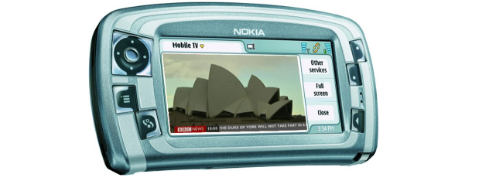Mobile TV: Why it stalled and why it won't take off

Being able to watch digital television on your mobile phone seemed to send the Western world into a craze two years ago. The thought of being able to watch your favourite channels or programmes from anywhere and everywhere made sense, with the apparent infrastructure already being in place.
Frank Dickson, Reed Business - Europe's biggest online and offline publisher, told the BBC:
"The idea combines the two biggest things around: TV and phones. Everyone has a TV and everyone has a mobile phone. So of course the industry thought the prospect of bringing the two together was going to be huge. In reality, live mobile TV has been very slow to take off."
To put this in perspective, I have been to numerous conferences, travelled daily around London for six months straight, commute from Canterbury to London both ways at least once a week, and spend the rest of my time in the city or on the university campus. I have never seen anybody watching live television on their phone. It just doesn't seem to happen in this country.

Everyone has a phone, and everyone has a television. People use their phones for making and receiving phone calls, with the exception of evolutionary changes in mobile devices. Television is used as a device to watch at the end of a long day; to unwind and to relax, or in some cases to watch daytime tripe when you can't get a job.
The two wouldn't mix together well, like pouring Lysol into a pro-biotic drink.
There are currently two ways of getting mobile TV, and these two ways are flawed beyond belief:
- A mobile TV receiver such as a Nokia SU-33W, which only works with only three compatible Nokia models at the time of print. Not only that, take a look down the average suburban street and you'll see all the aerials on the roof pointing in the same direction. I see a mobile TV receiver working like a GPS on a train; holding it precariously against the window whilst shouting, "GET SIGNAL!". Most of my analogies seem to involve sitting on the train...
- Over-the-air using network streaming, which needs a network strong and powerful enough to get the stream across. I have proved with mobile broadband that it is hard enough to get downstream bandwidth over 200kbps. Mobile networks could not sustain a decent stream in the UK and US even with 3G technology. If you are using home or public wi-fi, you might be in for a shot.
Home and office broadband speeds haven't necessarily rocketed in the last few years but have increased in bandwidth potential. With this, the chance arose for television broadcasters and networks to provide on-demand access to live and already broadcast material.
But with access to these on-demand sites and mobile broadband speeds which can't compare to those that landline broadband services provide us, the logical step is to watch television on a computer instead.
No matter which way analysts and other bloggers look at it, a good part of my degree involves looking at, understanding and predicting society and its needs. I cannot see how or why mobile TV could or would take off. I just don't see a point to it.
You're more than welcome to prove me wrong. Leave a comment and tell me why.